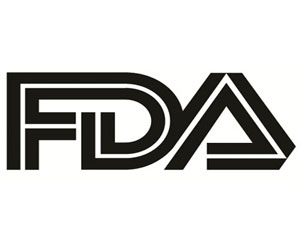- Home
- Editorial
- News
- Practice Guidelines
- Anesthesiology Guidelines
- Cancer Guidelines
- Cardiac Sciences Guidelines
- Critical Care Guidelines
- Dentistry Guidelines
- Dermatology Guidelines
- Diabetes and Endo Guidelines
- Diagnostics Guidelines
- ENT Guidelines
- Featured Practice Guidelines
- Gastroenterology Guidelines
- Geriatrics Guidelines
- Medicine Guidelines
- Nephrology Guidelines
- Neurosciences Guidelines
- Obs and Gynae Guidelines
- Ophthalmology Guidelines
- Orthopaedics Guidelines
- Paediatrics Guidelines
- Psychiatry Guidelines
- Pulmonology Guidelines
- Radiology Guidelines
- Surgery Guidelines
- Urology Guidelines
FDA approves first drug to ease pain in phototoxic exposure in erythropoietic protoporphyria

Food and Drug Administration has approved first drug to ease phototoxic exposure in erythropoietic protoporphyria patients.
The U.S. Food and Drug Administration has granted approval to afamelanotide to increase pain-free light exposure in adult patients with a history of phototoxic reactions from erythropoietic protoporphyria.
Afamelanotide is a melanocortin-1 receptor agonist that increases eumelanin production in the skin regardless of exposure to sunlight or artificial light.Erythropoietic protoporphyria is a rare disorder caused by mutations leading to impaired activity of ferrochelatase, an enzyme involved in heme production.
In patients of erythropoietic protoporphyria, a rare disorder, exposure to light may be extremely painful. Prior to today’s approval, there were no FDA-approved treatments to help erythropoietic protoporphyria patients increase their light exposure,” said Julie Beitz, M.D., director of FDA’s Center for Drug Evaluation and Research Office of Drug Evaluation III. “Today’s approval is one example of the FDA’s ongoing commitment to encourage industry innovation of therapies to treat rare diseases, and work with drug developers to make promising new therapies available to patients as safely and efficiently as possible.”
The efficacy of Scenesse was established in two parallel group clinical trials with patients with erythropoietic protoporphyria who received Scenesse or placebo form of the implant subcutaneously every two months. The first clinical trial enrolled 93 subjects, of whom 48 received Scenesse, and were followed for 180 days. The primary endpoint was the total number of hours over 180 days spent in direct sunlight between 10 a.m. and 6 p.m. on days with no pain. The median total number of hours over 180 days spent in direct sunlight between 10 a.m. and 6 p.m. on days with no pain was 64 hours for patients receiving Scenesse and 41 hours for patients taking placebo.
The second clinical trial enrolled 74 patients, of whom 38 received Scenesse, and were followed for 270 days. The primary endpoint was the total number of hours over 270 days spent outdoors between 10 am and 3 pm on days with no pain for which “most of the day” was spent in direct sunlight. The analysis did not include sun exposure on days patients reported spending time in a combination of both direct sunlight and shade. The median total number of hours over 270 days spent outdoors between 10 am and 3 pm on days with no pain for which “most of the day” was spent in direct sunlight was six hours for patients receiving Scenesse and 0.75 hours for patients receiving placebo.
Scenesse’s most common side effects are implant site reaction, nausea, oropharyngeal (part of the throat just behind the mouth, where the oral cavity starts) pain, cough, fatigue, skin hyperpigmentation, dizziness, melanocytic nevus (moles), respiratory tract infection, somnolence (feeling drowsy), non-acute porphyria (build-up of normally occurring molecules created during heme production) and skin irritation. Scenesse should be administered by a health care professional who is proficient in the subcutaneous implantation procedure and has completed the applicant-provided training. Scenesse may induce skin darkening, and a full body skin examination is recommended for patients twice a year. In addition, patients are encouraged to maintain sun protection measures during treatment with Scenesse to prevent phototoxic reactions related to erythropoietic protoporphyria.
The Food and Drug Administration granted this application Priority Review designation. Scenesse also received Orphan Drug designation, which provides incentives to assist and encourage the development of drugs for rare patients
Next Story
NO DATA FOUND

Disclaimer: This site is primarily intended for healthcare professionals. Any content/information on this website does not replace the advice of medical and/or health professionals and should not be construed as medical/diagnostic advice/endorsement or prescription. Use of this site is subject to our terms of use, privacy policy, advertisement policy. © 2020 Minerva Medical Treatment Pvt Ltd